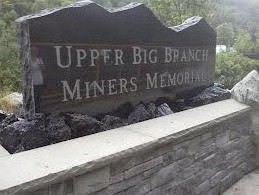

Today marks the anniversary of the Upper Big Branch disaster.
This is the second of two parts commemorating that moment in labor history in 2010.
Accumulation of explosive methane gas was so pronounced that the mine had to be evacuated several times leading up to the disaster.
A 126 page Governor’s Independent Investigation Panel report detailed
the systemic failures of safety systems and at governmental agencies to enforce
regulations. Lack of proper ventilation, adherence to rock dusting standards and proper
maintenance of machinery were main factors. The panel also held MSHA responsible for
“disregarding the documented risk of methane outbursts at the mine, overlooking the
deadly potential of a precarious ventilation system, neglecting to use its regulatory
authority to force technological improvements, and allowing the U.S. mine safety system
to atrophy.” They determined MSHA could have issued flagrant violation citations and
had the authority to shut the mines down, but didn’t. The report noted the cozy relations
between mine owners, politicians, judges and regulators, specifically “the ease with
which state mine officials move from employment with industry to government and
back.” Despised union-busting CEO Don Blankenship, who was tried and convicted to
one in year in jail, insisted his mines were safe. He cited three Sentinels of Safety awards
received from MSHA in 2009. These awards went to surface mining and coal processing
plant operations. The company consistently contested violations and attempted to control
the state’s political system in order to defeat oversight agencies. Blankenship even
blamed MSHA for the explosion because the agency demanded changes in UBB’s
ventilation system. A union safety committee could have shut down the mine before
methane gas and coal dust combined to cause the explosion. If only there had been a
union.
More Episodes
All Episodes>>You may also like
Create Your Podcast In Minutes
- Full-featured podcast site
- Unlimited storage and bandwidth
- Comprehensive podcast stats
- Distribute to Apple Podcasts, Spotify, and more
- Make money with your podcast











